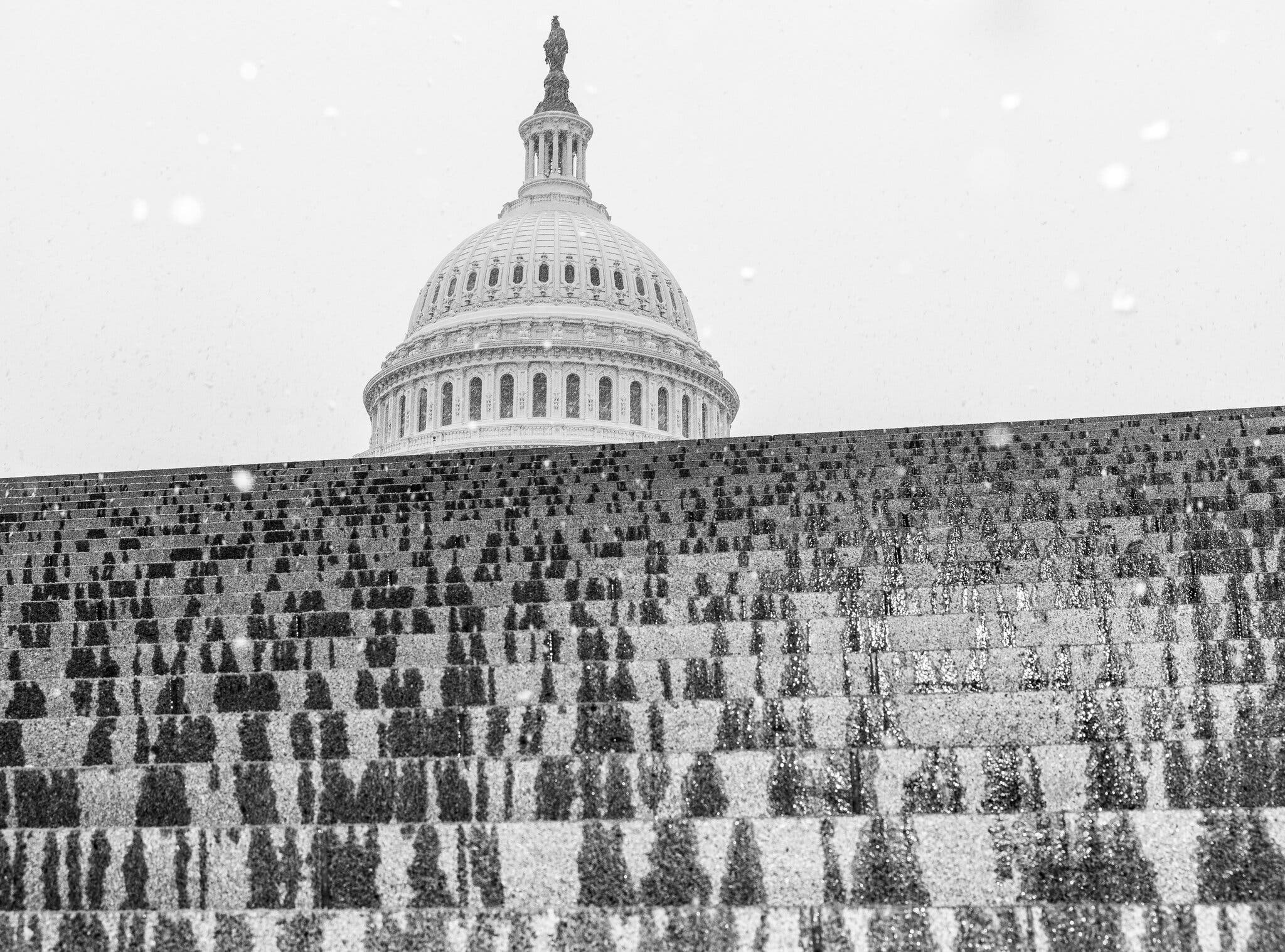Will Trump's Cuts Erase History? The Fate Of Museum Programs

Table of Contents
The Impact of Funding Cuts on Museum Operations
The ramifications of Trump's cuts on museum operations are multifaceted and deeply concerning. Reduced funding directly translates into compromised services and a potential erosion of our cultural legacy.
Reduced Staffing and Expertise
Fewer staff members mean fewer hands to manage the complex tasks of research, preservation, and educational outreach. This translates to:
- Fewer curators, archivists, educators, and conservators: A reduced workforce strains existing personnel, potentially compromising the quality of research, exhibitions, and educational programs.
- Increased workload leading to potential errors: Overburdened staff may make mistakes in cataloging, conservation, or educational materials, impacting the accuracy and reliability of museum resources.
- Difficulty attracting and retaining top talent: Lower salaries and reduced job security make it difficult for museums to attract and retain skilled professionals, further impacting the quality of their work.
- Impact on specialized knowledge: The loss of experienced professionals could mean the loss of irreplaceable expertise in specific areas, leading to a decline in the museum's ability to preserve and interpret its collections.
Limited Exhibition Development and Programming
Budget cuts directly affect the ability of museums to create engaging and informative exhibitions and programs. This means:
- Fewer special exhibitions: The opportunity to explore new themes and perspectives through temporary exhibitions will be drastically reduced.
- Reduction in public programs (lectures, workshops): Educational and outreach initiatives, vital for community engagement, will suffer.
- Limited capacity for traveling exhibits: Museums will be less able to participate in the exchange of exhibitions, limiting the reach and impact of their collections.
- Impact on community engagement: Reduced programming will affect the museum's ability to connect with its community, potentially leading to decreased public support.
Compromised Preservation Efforts
Perhaps the most devastating consequence of Trump's cuts is the potential damage to irreplaceable artifacts and collections. This encompasses:
- Deterioration of artifacts: Without adequate funding for climate control, pest control, and routine maintenance, artifacts will inevitably deteriorate.
- Reduced resources for preventative conservation: Proactive measures to safeguard artifacts will be neglected, increasing the risk of damage.
- Inability to adequately address damage or repair needs: Emergency repairs and restoration work will be delayed or entirely forgone, accelerating the deterioration process.
- Long-term damage to irreplaceable items: The cumulative effect of these factors is irreversible damage to the nation's cultural heritage.
The Long-Term Consequences of Decreased Funding
The effects of decreased museum funding extend far beyond the immediate operational challenges. The long-term consequences are dire and potentially irreversible.
Loss of Cultural Heritage and Knowledge
The most profound consequence of Trump's cuts is the potential loss of irreplaceable historical knowledge and cultural heritage. This translates to:
- Loss of irreplaceable artifacts: Deterioration and damage to artifacts lead to irreversible loss.
- Diminished access to educational resources: Reduced museum programming and educational outreach limit access to vital historical and cultural information.
- Erosion of national identity and cultural understanding: The loss of museums and their collections diminishes our collective understanding of our nation's past and cultural identity.
- Impact on future generations: Future generations will be deprived of the opportunity to learn from and engage with our shared history.
Economic Impact on Communities
Museums are vital economic drivers in many communities. Funding cuts will have a cascading effect on local economies.
- Job losses in museums and related industries: Museum closures and reduced staffing lead to unemployment in museums and related sectors (tourism, hospitality, etc.).
- Reduced tourism and revenue for local businesses: Museums attract tourists, benefiting local businesses. Decreased museum attendance translates to reduced revenue for local economies.
- Negative impact on local economies: The cumulative economic impact of museum closures can be significant, particularly in communities that rely heavily on tourism.
The Erosion of Public Trust in Institutions
Trump's cuts to museum funding damage public trust in governmental institutions and their commitment to preserving our shared history. This includes:
- Decreased public support for museums: Concerns about the future of museums will reduce public engagement and support.
- Negative perception of government's role in cultural preservation: This can lead to decreased public support for government funding of cultural initiatives.
- Impact on future funding opportunities: Eroded public trust can make it more difficult to secure future funding from both public and private sources.
Advocacy and Countermeasures
The preservation of our cultural heritage requires immediate and concerted action. Public advocacy and exploration of alternative funding sources are crucial.
The Role of Public Advocacy
Active public engagement is essential to protect museums and historical preservation efforts. This includes:
- Writing to elected officials: Contact your representatives to express your concern about Trump's cuts and advocate for increased funding.
- Supporting museum fundraising initiatives: Donate to your local museums and participate in their fundraising efforts.
- Participating in public demonstrations and protests: Make your voice heard by participating in organized events to raise awareness about this issue.
Alternative Funding Strategies
Exploring alternative funding sources for museums is vital to mitigate the negative impact of Trump's cuts. This can include:
- Crowdfunding campaigns: Utilize online platforms to raise funds from the public.
- Grant applications: Seek funding from private foundations and government agencies that still support cultural preservation.
- Corporate partnerships and sponsorships: Form partnerships with businesses to secure funding for specific projects or programs.
- Private donations from individuals and foundations: Encourage private individuals and foundations to support museums through direct donations.
Conclusion
The potential consequences of Trump's cuts on museum programs are far-reaching, impacting not only the preservation of historical artifacts but also broader aspects of cultural heritage, education, and community well-being. The loss of historical knowledge is irreversible. Public advocacy and the exploration of alternative funding mechanisms are crucial to mitigate these negative consequences. We must act now to protect our shared history. Contact your elected officials and support your local museums. Let's ensure that Trump's cuts do not erase history! Learn more about how you can help preserve our cultural heritage and fight against harmful cuts to museum funding.

Featured Posts
-
 It A Stream Beenie Mans New York City Conquest
May 23, 2025
It A Stream Beenie Mans New York City Conquest
May 23, 2025 -
 Alhryt Lflstyn Sda Emlyt Washntn Wsrkht Rwdryghyz Ela Mnsat Altwasl
May 23, 2025
Alhryt Lflstyn Sda Emlyt Washntn Wsrkht Rwdryghyz Ela Mnsat Altwasl
May 23, 2025 -
 Kieran Culkin Discusses His Casting In A Real Pain By Jesse Eisenberg
May 23, 2025
Kieran Culkin Discusses His Casting In A Real Pain By Jesse Eisenberg
May 23, 2025 -
 French Film Week Award Winning Films In Seoul And Busan
May 23, 2025
French Film Week Award Winning Films In Seoul And Busan
May 23, 2025 -
 Collaboration Extended Ooredoo Qatar And Qtspbfs Continued Growth
May 23, 2025
Collaboration Extended Ooredoo Qatar And Qtspbfs Continued Growth
May 23, 2025
